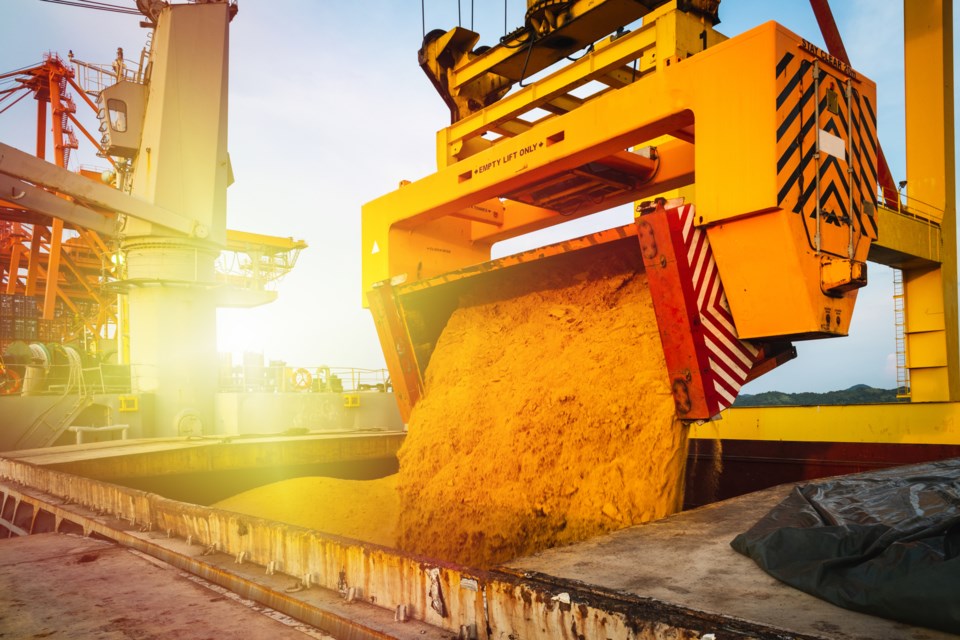Global supply chain snarls are making it harder for Saskatchewan farmers to ship their crops, and to buy inputs to prepare for spring.
To break down what that means, the StarPhoenix spoke to Todd Lewis, president of the Agricultural Producers Association of Saskatchewan, Carl Potts, executive director of Saskatchewan Pulse Growers, and Mark Hemmes, president of Quorum Corporation, which tracks the system of grain handling and transportation in Canada.
Q: What is this supply chain crunch doing to farmers?
Potts: There's two main issues related to supply chains, the first 小蓝视频 a lack of shipping container availability for exporting products, but also related to imports as well. And second: the cost and availability of crop inputs for next year.
Carriers are shipping containers back to Asia empty rather than using them for the export of agriculture products.
That's really having an impact on our side. That's because 30 to 40 per cent of pulses and special crops from Canada are exported by container every year.
If you look at lentils, which is our largest acreage pulse crop here in Saskatchewan, 50 per cent of our exports of lentils go by a container.
Lewis: It doesn't matter if it is tires, nuts and bolts or siding or plumbing. All kinds of things are in short supply.
That goes for things to both repair equipment or to build with. They're in short supply or facing lots of delays. We're also hearing things even about summer inputs — fertilizer or chemicals — that we're going to need for next spring.
Fertilizer pricing is also quite high right now. It's lots of wait and see.
Q: Why are shipping containers such a problem for farmers?
Hemmes: I'm probably telling you a story that you've heard or read about 100 times now. But the situation in the Canadian ag industry is that these container lines are forcing all of these empty containers back to their originating countries where manufactured goods are coming from.
If there's an empty container in Canada, they say, "don't put any grain on it. Just load it empty onto the vessel and bring it back here to be loaded up with high value products."
There's nothing left for the people here, or there's very little, and what is left is going at a phenomenally higher price.
That's where we get our container capacity. It is from the empty imports. And right now, it's that lead part of the supply chain that's confounding it all.
Potts: The availability of service has really plummeted and container shipping rates have — on some routes — more than tripled from a year ago.
It's a combination of both availability of shipping containers as well as the overall cost, which we know ultimately flows back directly to farmers.
Q: Where does this year's drought fit?
Hemmes: A drop in production is helping a little bit. But there was still a backlog of traffic from last year that was waiting to get into the marketplace.
That's coupled with the fact that the prices are high for just about every grain commodity. Combine all that together and it does cause a little concern (about) 小蓝视频 able to meet those market demands, even if the containers were there.
Q: What if this drags into next year?
Potts: (There are concerns) around fertilizer, fuel, seed and machinery costs and availability.
Farmers are coming off of a drought year where they have reduced cash flow ... but they're 小蓝视频 told at the same time to purchase fertilizer early if they can, to help ensure availability. That's a challenging area for producers — both the availability of some of these crop inputs and the significantly higher prices for next year.
Lewis: Hopefully, by next spring, everything will be all shipped out as far as the fertilizer inputs, but it's pretty uncertain right now.
We need to see improvements in rail, road and port infrastructure to ensure that we don't have these supply bottlenecks.
Hemmes: I'm concerned that this could go on longer than just another couple of months.
I'm pretty sure that we'll get something akin to a normal crop next year. We don't want to go into that with this problem still in place.
The conversation has been edited for length and clarity.




